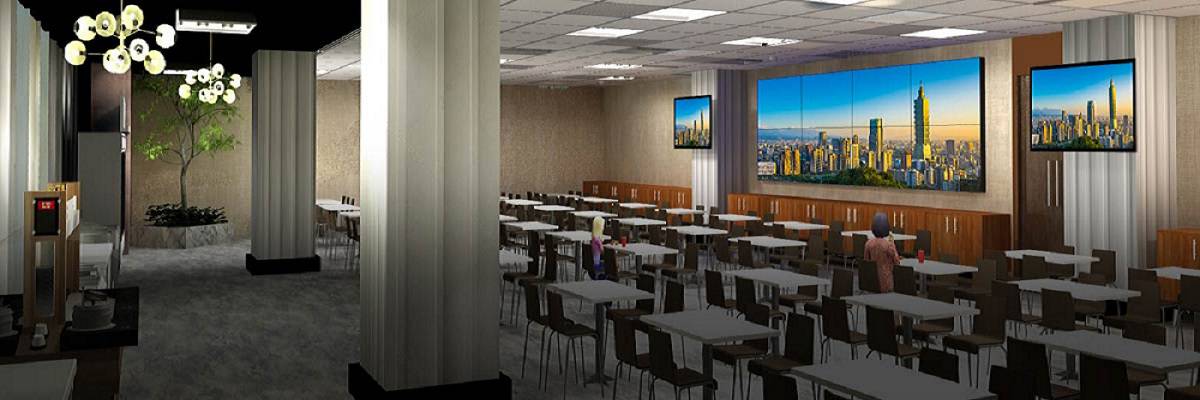Town Halls (or all-hands meetings), play a key role in engaging employees, discussing important topics, ensuring organisational alignment and encouraging two-way conversations between the management and employees. They also offer a platform for everyone to forge bonds, close communication gaps between management and the workforce and celebrate key milestones.
However, running effective Town Hall events is challenging, and choosing the right technology to support these events plays an important role in how well they help businesses achieve these benefits.
Types of Town Hall meeting
Typically hosted by a member of upper management (CEO/Regional Manager/Managing Director), this event is attended by all the employees in a large hall. However, in the post-pandemic world, several companies with remote working structures are opting for hybrid town halls (comprising both physical and virtual audiences). A virtual town hall is important for employee morale, maintaining continuity in company work culture, recognising employee contribution and successes while providing opportunities for safe and comfortable socialisation.
To create the best experience for your audience, it is important to plan and conduct town hall meetings keeping in mind some best practices. Organising teams should ensure that they stick to a well-crafted agenda, plan for contingencies to avoid technical glitches and pick the right technology to facilitate better information dissemination.
Key features required to conduct successful Town Hall events?
-
In-person Town (All-Hands) Hall
These are largely held in larger spaces like cafeterias and auditoriums or by combining several multi-purpose rooms. The space needs to accommodate larger groups of people (from 100 to 500) and have the equipment to ensure that all the participants can see and hear every element of the event clearly.

Feature 1 – In-person Town Halls require large, high-resolution displays so that even the last person sitting in the cafeteria has an unobstructed view of the presentation and the presenter. Active LED technologies are fast replacing projectors for this application, as they can be used as Live TV or digital signages when the space is being utilised as a cafeteria.
Feature 2 – Audio clarity is extremely critical in the Town Hall scenario, and the provision of a well-tuned sound system including lapel mic for presenter and handheld mics for the attendees is important. The audio should be such that the presenters should be heard with clarity not only within the large Town Hall space but also by audiences at the far end via VC. Recorded or streamed audio should also have high fidelity to ensure clarity. This can be achieved only if the microphones and speakers are controlled via a good DSP and a high-level program audio system.
Feature 3 – A good camera system with multiple cameras, high optical zoom capabilities, a joystick camera controller and proper lighting (especially in the stage area) is very important. A presenter tracking camera can help the presenter move around the stage and focus on his presentation and not on the camera. Ceiling mics in the stage area can also allow audio tracking and provide audio tuning capabilities.
Feature 4 – To ensure complete reliability during critical events, organisations should invest in a fallback solution for the video conferencing setup. It is good to have a backup hardware VC unit for redundancy, especially when senior management like CEOs/CFOs/CXOs present in town hall events. It is important to have more than one control touch panel for controlling the complete AV system with a dedicated AV specialist on hand to manage the system.
-
Virtual Town Hall
A virtual Town Hall setup requires a different type of flexibility than an all-hands event. Here since the presenters and audience may not be present in the organisation’s offices during the event, the requirements at the presenter end are generally simpler. Even a laptop and lapel mike can be effective, though you will need a better camera and microphone system for good audio and video clarity.

Feature 1 – This is more of a personal studio setup where the presenter speaks into a camera from their residence or a room in the office. A teleprompter would be a good solution to implement, as it would aid the presenter in achieving smoother communication. In such a setup, the speech text would be visible at the presenter’s eye level and the camera would be placed behind the reflector.
Feature 2- Even though using a good headset can be sufficient for good audibility, it may not be desirable for the appearance on camera. Hence we would suggest that organisations invest in an improved audio setup using a good table mic and an unobtrusive in-ear speaker for the presenter to hear the far-end questions (if any).
Feature 3- Lighting may be a concern in some scenarios when presenters are presenting from their homes. This should be given some attention because it has a significant impact on video quality. Balanced lighting with 500 lux levels on the face of the presenter can help achieve this even when available lighting is not ideal.
-
Hybrid Town Hall
With the advent of the pandemic, organisations have to adapt to the reality of changing work scenarios. Team members are likely to be distributed across physical and virtual workspaces, which means that a more flexible collaboration arrangement is called for. With part of the Town Hall audience present in the office, IT teams need to embrace more flexible platforms (UC) and technologies for both physical and virtual spaces.
Feature 1- Cloud collaboration or UC platforms have demonstrated that they provide a wide set of collaboration capabilities for when people are working from home. They have also rapidly improved their in-room capabilities with better hardware integration and growing their certified device ecosystems. Organisations should ideally incorporate support for these platforms into their legacy VC and room systems.
Feature 2- Since these events may involve a combination of in-person and virtual speakers, the production of the events becomes more complex. Creating a physical or virtual control room with the resources (both people and technology) to manage this in a centralised way can help run the events smoothly.
Note: If multiple presenters are hosting the Town Hall from a single “broadcast” space, then a greater investment in the VC system and the AV set up at their location will be required.
What is Different about the VC Setup in Town Hall Implementations?
The VC set up for a virtual town hall can be an all-in-one camera bar. The VC setup for an all-hands town hall would include multiple cameras, microphones, speakers, displays and more. For greater reliability and greater ease of use, this hardware should be vendor certified ensuring complete compatibility with the VC platform that is being deployed. Most of the prominent cloud VC platforms now have a diverse certified device ecosystem from which these products can be selected.
Case Study: Large 430 pax Town Hall space combining training rooms and cafeteria
As a part of this project, we created 4 divisible training rooms and a 2-section cafeteria which can be combined to create one huge 430 seat Town Hall space. Of course, each room can also be cordoned off for use by smaller groups when required.

CASE STUDY: In-person or all hands Cafeteria cum Town Hall space
Key features in this Town Hall implementation
| An intelligent lighting control system helps adapt the lighting for Town Hall and regular use scenarios. This allows better visibility of presenters | All AV and lighting can be controlled from the podium or the backup touch panel interface.
A control room is also present with a console for managing events from behind the scenes |
The projector driven display provides a large 120” image on the motorised drop screen.
Secondary 43” LED TVs across the room can also display the event in Town Hall more |
The VC cameras used here are FullHD PTZ units that provide improved video quality and coverage.
A total of 12 cameras have been set up in the cafeteria space |
When in Town Hall mode, the cafeteria utilises projectors combined with 119” roller screens for high visibility of content for participants in this section. Video conferencing has also been enabled in this space with hardware-based VC systems so the event can be viewed live by remote audiences. The podium also features a touch panel control for managing various aspects of the AV setup.
Audiences in the Training Room sections are able to view the proceedings on a large 98″ Samsung display, to which the event video is routed. which can be accessed via connectivity interfaces. Ceiling mounted speakers and microphones are combined with a Biamp DSP to ensure perfect audio quality.
How well can Cloud/Soft-VC Platforms Work for Town Hall Applications?
Using the cloud-based VC platform for Town Hall makes more sense as the streaming and recording are all done on the cloud. Given the scalability and reliability of these platforms, a large number of participants can access the Town Hall simultaneously and can do this from any device: laptop, PC, mobile, Android TV, etc and from anywhere, be it his home, office, cafe or a public transport.
Here is a Quick Comparison
| Traditional hardware VC codec solutions | Soft/Cloud VC solutions | |
| Ownership Costs | Both opex and capex tend to be on the higher side | Capex is significantly lower, and opex is also more affordable |
| Bandwidth utilisation | Higher bandwidth consumption | Relatively more optimised use of bandwidth |
| Management of infrastructure | Owned infrastructure requires more maintenance and may require expensive additional hardware to scale up | Easier management of the collaboration infrastructure via the cloud platform. Also more scalable. |
| Cross device performance | Performance is usually consistent across all hardware | Slower performance may occur for older or lower spec hardware (laptops etc) |
| Streaming and recording | Requires dedicated hardware which needs to be installed and integrated | Built-in feature for most cloud platforms, including a cloud recording feature and video-on-demand as required |
| Additional features and upgrades | Usually come at an extra cost or require comprehensive upgrades | New features are usually added with software updates as the functionality is not hardware based |
| Ease of use | Auto dial out / Auto answer makes it easy to operate. Calls can be initiated without touching the controller. | Manual intervention is necessary to initiate a call. Need to press a “Join now” button to start the call. Dial-out is available, but no dial-in. |
| Content sharing | Content sharing is simple on one call even with multiple presenters. | Each presenter needs their own individual connection into the call to share content. |
A Final Word
A Town Hall has been a powerful tool for organisations to bridge the gaps between the management and teams and to foster a sense of togetherness or a common mission. The coming of the pandemic has disrupted these events, leaving businesses struggling to fill the gap.
Re-imagining the corporate Town Hall is critical as organisations adapt to the new realities of hybrid work, and revamp their event and support infrastructure to make effective Town Hall events possible again.
Note: The relatively complex nature of hosting and managing Town Hall events requires a comprehensive rethink of the design and integration of technologies needed to support these events. Experienced AV integration and design specialists can help build your Town Hall infrastructure with the right AV resources.
For more information on VC Solution for Town Hall Applications in India,
Contact Actis at 022-30808080 or at contact@actis.co.in.


